I. INTRODUCTION
Calcium (Ca) and phosphorus (P) requirements of poultry have been investigated extensively over the past 50 years. However, the interactions of these two macrominerals are highly complex and are not easily interpreted. The majority of published animal nutritional research is based either on altering a single food property at a time or where multiple factors are changed. While these approaches are valuable in some circumstances, both of these impart a sense or uncertainty where two nutrients interact (Simpson and Raubenheimer, 1999), such as is the case with Ca and P in poultry nutrition.
An alternative to the aforementioned methods is the geometric framework (GF) which graphically models outcomes such as bodyweight and feed intake and maps these in a geometric space that is fashioned by two or more axes. The axes of the GF may be nutritional, environmental or any other input that contributes to the maintenance and growth of the animal. The GF has been used in other species such as insects, rodents, fish and humans to investigate the relationship between the macronutrients; carbohydrate and protein (Simpson and Raubenheimer, 2001; Simpson et al., 2003). In this study the GF was applied to investigate the interaction between varying concentrations and ratios of total Ca and avP on production and nutrient digestibility in broilers.
II. MATERIALS AND METHODS
All experimental procedures in this study were conducted in accordance with the University of Sydney Animal Ethics Committee. A total of 720 day old male Ross 308 chicks were obtained from a commercial hatchery (Baiada Poultry Pty Ltd, Marsden Park, NSW) and randomly allocated to cages. Birds were maintained in an environmentally controlled room set at 31 °C for the first five days and this was reduced by 0.5 °C per day until 24 °C (day 21). The photoperiod was 23h:1h (light:dark) for the first five days and then 18h:6h (light:dark) thereafter.
For the first 7 days, all birds were fed a standard commercial broiler starter diet which provided 11.8 MJ/kg AME, 228g/kg CP, 8.8 g/kg Ca and 4.4 g/kg avP (Vella Stock Feeds, Plumpton NSW). On day 7, all birds were individually weighed, wing tagged and randomly allocated to one of 15 dietary treatments in a completely randomised design. Diets were fed as a mash based on corn and soybean meal and were formulated to be nutritionally adequate except for total Ca and avP. Diets were clustered around three total Ca + avP densities of 12, 13.5 and 15 g/kg with five varying ratios of total Ca:avP (4:1, 2.75:1, 2:1 and 1.14:1) within each density. To calculate the apparent ileal digestibility (AID) coefficients for crude protein (CP), energy and minerals, an indigestible marker (Celite 281, Filchem Australia Pty Ltd, Castle Hill, NSW, Australia) was added to diets at a concentration of 20 g/kg. Treatments were replicated five times with eight birds per replicate cage. Feed intake and individual body weight were recorded weekly. Ileal digesta samples were collected from individual birds on day 28 of the study according to the procedures of Ravindran et al. (2005). Samples were frozen at -20 °C and freeze dried thereafter.
The gross energy (GE) of diets and excreta were determined using a Parr 1281 adiabatic bomb calorimeter (Parr Instrument Company, Moline, IL, USA) that was standardised with benzoic acid. Nitrogen concentration of samples was determined by the Dumas method using a FP-428 nitrogen analyser (LECO® Corporation, St. Joseph, MI, USA) as described by Sweeny (1989). Samples were wet acid digested using nitric acid and hydrogen peroxide prior to the determination of mineral concentration by inductively Coupled Plasma-Optical Emission Spectroscopy using a Perkin Elmer OPTIMA 7300 (Perkin Elmer Inc, Waltham, MA, USA) (Peters et al., 2003). The acid insoluble ash component of dried diets and ileal digesta samples were determined according to the method of Siriwan et al. (1993).
Performance data were surface mapped using the Thin Plate Spline procedure of the fields package (R Development Core Team, 2011). Treatments are represented as dots overlaid on the contour plots. Interrogation of the data was performed using a quadratic function. Treatment differences were considered significant at P < 0.05.
III. RESULTS AND DISCUSSION
The interaction between formulated dietary total Ca and avP on feed intake (FI) for the experimental period are presented in Figure 1. Broilers fed diets with high avP (> 5.0 g/kg) and high Ca (> 10.0 g/kg Ca) had the greatest FI. Feed intake increased as avP increased between 2.4-3.0 g/kg but was less influenced above 4.0 g/kg avP where Ca concentration became dominant. These results are in agreement with Perney et al. (1993) who showed that feed intake of broilers was reduced at low avP and was increased as greater avP was provided. Since P is essential for many physiological processes, it may be that when birds are fed low avP diets reduced consumption of high Ca diets may be a response to restore Ca and P homeostasis. However, the mechanisms governing this relationship are yet to be defined.
As indicated by the close proximity of the contour lines (see Figure 2), increased body weight gain response of broilers was more rapid between 2.4-3.0 g/kg avP when compared to increasing avP from 4.0-5.0 g/kg. At low avP concentrations, this relationship was more pronounced when total Ca concentrations were greater than 9.6 g/kg. However, when concentrations of dietary avP were greater than 4.0 g/kg total Ca was more influential to body weight gain (interaction of P < 0.01).
Overall FCR was poorest for broilers fed diets with low avP and was less influenced by dietary Ca at these same avP concentrations (Figure 3). Increasing the concentration of avP in diets resulted in an improved FCR and this was optimised when birds were fed the diet formulated with 5.6 g/kg avP and 6.4 g/kg Ca (Ca x avP; P < 0.01). The AID coefficients for N, Ca, and P are shown in Figures 4-6, respectively. Maximal AID of N was centred on feeding diets containing 4.5-5.4 g/kg avP and 8.1-10.0 g/kg Ca. Sharp declines in N digestibility were found when birds were fed diets outside of these parameters and suggest that relatively moderate changes in Ca or avP concentrations would result in significant changes to ileal N digestibility.
Figure 1 - The effect of total dietary Ca and avP on the feed intake (g/b) of broilers (d7-28).
Figure 2 - The effect of total dietary Ca and avP on the body weight gain (g/b) of broilers (d7- 28).
Figure 3 - The effect of total dietary Ca and avP on the feed conversion ratio (g:g) of broilers (d7-28).
Figure 4 - The effect of total dietary Ca and avP on the apparent ileal digestibility of Ca in broilers (d28).
Figure 5 - The effect of total dietary Ca and avP on the apparent ileal digestibility of P in broilers (d28).
Figure 6 - The effect of total dietary Ca and avP on the apparent ileal digestibility of N in broilers (d28).
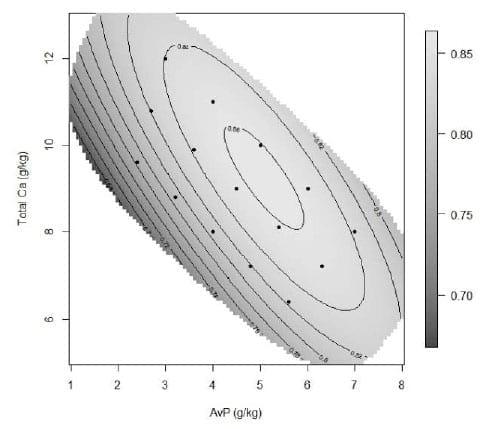
Results for the AID of Ca showed there was an interaction (P < 0.05) between Ca and avP concentration with birds fed 2.7 g/kg avP and 10.8 g/kg Ca diets having the highest Ca AID in contrast to birds fed the diet containing 5.6 g/kg avP and 6.4 g/kg Ca that had the poorest. The higher ileal Ca digestibility reported in this study is in agreement with previous findings in similar age broilers fed corn-soy based diets (Cowieson et al., 2006). Dietary Ca (P < 0.001) and avP (P < 0.001) concentrations were both found to influence the AID of P and was greatest when birds were fed diets with 5.0 g/kg avP and 10.0 g/kg Ca and least when birds were fed the 2.4 g/kg avP and 9.6 g/kg Ca diet. In conclusion, within the confines of this study it is apparent that the concentration of avP provided in broiler diets is of greater influence than total Ca on the performance metrics measured. This is made more apparent when diets contain high concentrations of Ca.
ACKNOWLEDGEMENTS: The authors are grateful to the Australian Rural Industries Research and Development Corporation Chicken Meat Program for their financial support of this study. Emma Bradbury is supported by a PhD scholarship from the Australian Poultry Cooperative Research Centre.
REFERENCES
Cowieson AJ, Acamovic T, Bedford MR (2006) Poultry Science 85, 1389-1397.
Perney KM, Cantor AH, Straw ML, Herkelman KL (1993) Poultry Science 72, 2106-2114.
Peters J, Combs S, Hoskins B, Jarman J, Kovar J, Watson M, Wolf A, Wolf N (2003) Recommended methods of manure analysis. University of Wisconsin Cooperative Extension Publishing, Madison, WI, USA.
R Development Core Team (2011). R: A language and environment for statistical computing. 2.15 ed. Vienna: R Foundation for Statistical Computing.
Ravindran V, Hew LI, Ravindran G, Bryden WL (2005) Animal Science 81, 85-97.
Simpson SJ, Batley R, Raubenheimer * D (2003) Appetite 41, 123-140.
Simpson SJ, Raubenheimer D (1999) The Proceedings of the Nutrition Society 58, 779-89.
Simpson SJ, Raubenheimer D (2001) Aquaculture Research 32, 421-432.
Siriwan P, Bryden WL, Mollah Y, Annison EF (1993) British Poultry Science 34, 939-949.
Sweeney RA (1989) Journal of the Association of Official Analytical Chemists 72, 770-774.
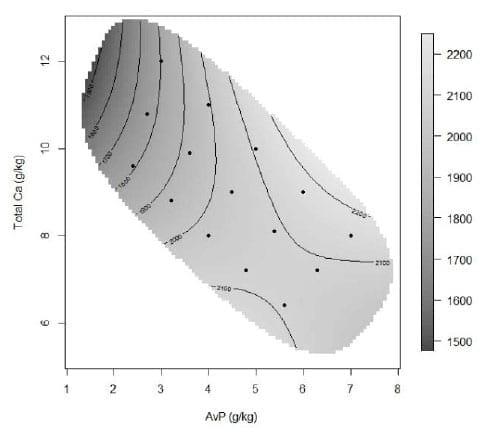
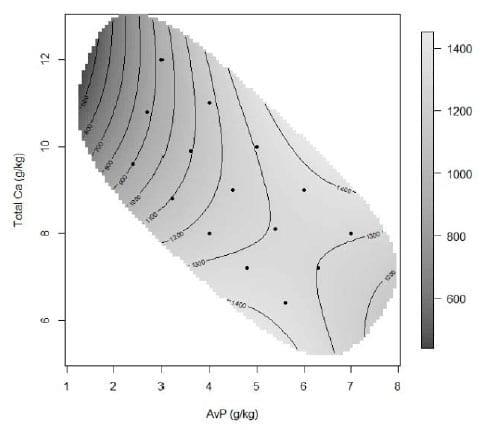

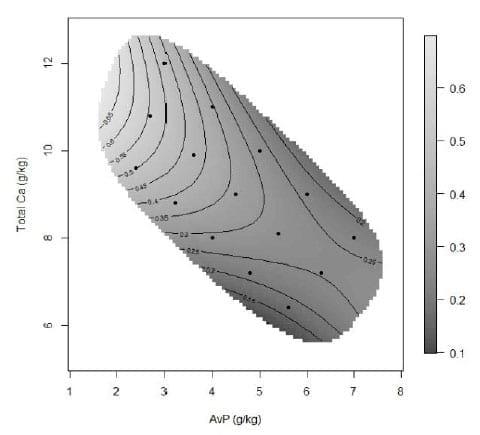
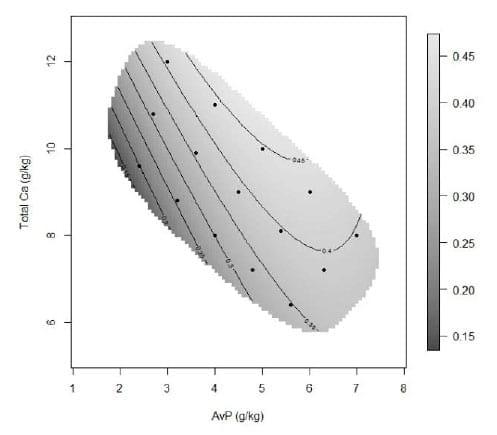











.jpg&w=3840&q=75)